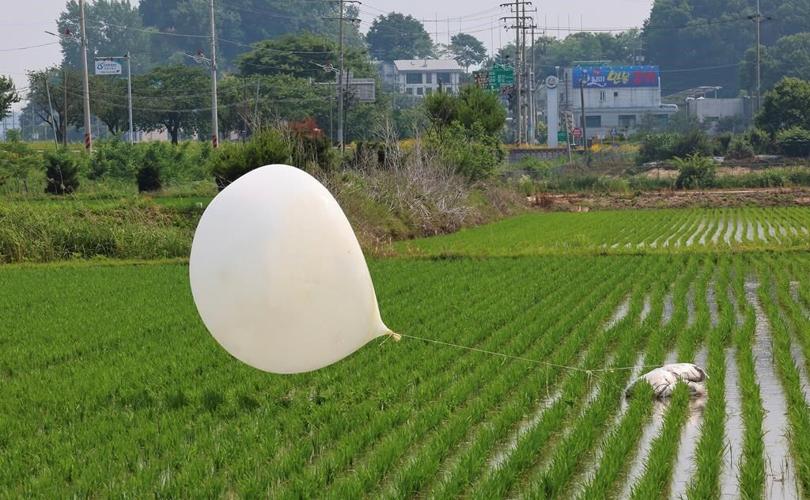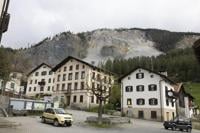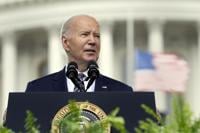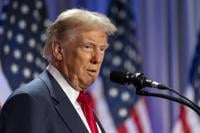SEOUL, South Korea (AP) — South Korea said Friday it has restarted blasting propaganda broadcasts into North Korea to retaliate against the North’s latest round of trash-carrying balloon launches, a resumption of Cold War-style tactics that are raising animosities between the rivals.
South Korea’s Joint Chiefs of Staff said in a statement that it used frontline loudspeakers to blare anti-Pyongyang broadcasts over the border between Thursday evening and Friday morning.
The broadcasts were the first of their kind in about 40 days. The contents of the broadcasts were not immediately known, but its previous ones on June 9 reportedly included K-pop songs, weather forecasts and news on Samsung, the biggest South Korean company, as well as outside criticism of the North’s missile program and its crackdown on foreign video.
The South Korean broadcasts could trigger an angry response from North Korea which is extremely sensitive to any outside attempt to undermine its political system. In 2015, when South Korea restarted loudspeaker broadcasts for the first time in 11 years, North Korea fired artillery rounds across the border, prompting the South to return fire, according to South Korean officials. No casualties were reported.
South Korea’s military earlier said North Korea floated the balloons on Thursday afternoon in its seventh such balloon campaign in recent months.
Starting in late May, North Korea has carrying wastepaper, scraps of cloth, cigarette butts and even manure toward South Korea, saying they were in response to to the North via their own balloons. No hazardous materials were found. North Korea last flew such balloons in late June.
In response, South Korea with North Korea, resuming propaganda broadcasts briefly and front-line live-fire military drills at border areas.
Earlier this week, the powerful sister of North Korean leader Kim Jong Un hinted at flying rubbish-carrying balloons again or launching new countermeasures, saying South Korean balloons have been found again at border and other areas in North Korea. In her statement Tuesday, Kim Yo Jong warned that South Korean “scum” must be ready to pay “a gruesome and dear price.” That raised concerns that North Korea could stage physical provocations, rather than balloon launches.
South Korea’s military said Wednesday it has boosted its readiness to brace for any provocation by North Korea. It said North Korea may fire at incoming South Korean balloons across the border or floating mines downriver.
It wasn’t immediately known whether groups in South Korea have recently scattered leaflets in North Korea. For years, activist groups led by North Korean defectors have used helium-filled balloons to drop anti-North Korean leaflets, USB sticks containing K-pop music and South Korean dramas and U.S. dollar bills in the North.
North Korea views such activities as a serious security threat and challenge to its ban on foreign news for most of its 26 million people. In 2020, North Korea on its territory in a furious response to South Korean civilian leafleting campaigns. In 2014, North Korea fired at balloons flying toward its territory and South Korea returned fire, though there were no casualties.
Tensions between the Koreas have heightened in recent years because of North Korea’s missile tests and the expansion of U.S-South Korean military drills that North Korea calls invasion rehearsals. Experts say North Korea’s expanding ties with Russia could embolden Kim Jong Un to stage bigger provocations, particularly ahead of the U.S. presidential election in November.
North Korea’s state media said Friday that Kim met a visiting Russian delegation led by Vice Defense Minister Aleksey Krivoruchko. During the meeting, Kim stressed the need for the two countries’ armies to unite more firmly to defend international peace and justice, according to the North’s official Korean Central News Agency.
In June, Kim met Russian President Vladimir Putin in Pyongyang and signed a to provide aid to the other if it is attacked, and vowed to boost other cooperation. Analysts say the accord represents the strongest connection between the two countries since the end of the Cold War.










































